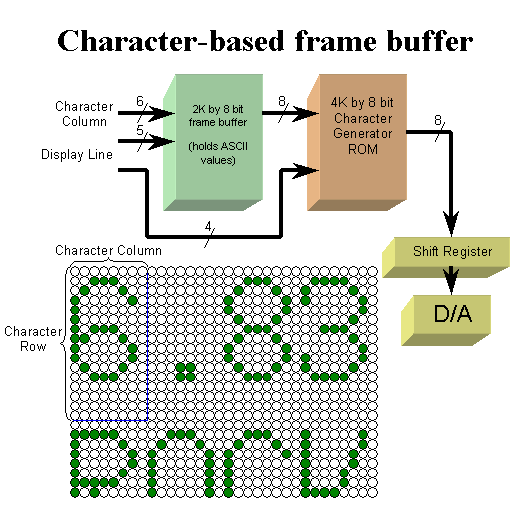Raster Display Simulation

In a raster display the path of the electron beam is hardwired. The computer must synchronize its "painting" of the
screen with the scanning of the display. The computer only controls the intensity of the color at each point on the screen.
Usually a dedicated section of memory, called the frame buffer, is used to store these intensity variations.
|
 |
Lecture 1 |
|
Slide 13 |
|
6.837 Fall '01 |
 |
The simulation above is a Java applet that simulates the scanning of
a raster display. Move the CRT wireframe (by clicking and dragging) in
order to get a better feel.
There were a few attempts at building systems with downloadable or
programmable character generators. And a few systems added an extra
byte to specify the foreground and background colors of the character
cell. Lots of tank/maze arcade games in the 70's worked this way. But
by the late 70's and early 80's the price of memory started a free-fall
and the graphics terminal was born. In a later lecture we'll go into a lot more
detail about the notion of a framebuffer an how it is fundamental to
modern computer graphics.
